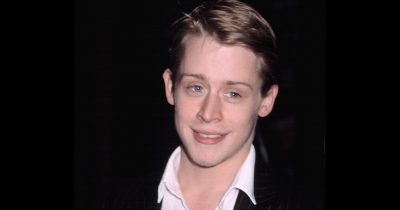
The human feet, though often overlooked, are marvels of engineering and play a vital role in our daily lives. They are not just for standing or walking; they provide balance, support and mobility.
What you might not know is that when pressure is applied to specific points on your feet, it can stimulate relief in parts of your body and promote your overall well-being.
Reflexology, the ancient practice of applying pressure to specific points on the feet, hands, or ears to promote overall well-being, often encounters skepticism. It’s understandable – on the surface, the idea of influencing internal organs or alleviating pain through foot pressure may seem far-fetched.
And though you might be skeptical, a decades long study by the National Library of Medicine (NLM) confirms that foot reflexology “will be introduced” to “provide physical and psychological relief to patients with serious clinical conditions.”
“These healthcare methods can become a part of people’s lives and give them a more solid, comprehensive, and healthy sustainable life value,” NLM writes of the ancient therapeutic practice that was first documented as far back as 2330.
How it works
Reflexology operates on the principle that specific areas on the feet, hands, or ears are connected to other body parts. For example, a point on the sole of the foot might correspond to the heart or lungs, or the tip of your toe is believed to be a path to your sinuses.
By applying targeted pressure to these zones, practitioners stimulate nerve endings, improving blood circulation and energy flow.
The practice combines knowledge of anatomy and physiology with holistic wellness techniques, and many individuals report feeling deeply relaxed and rejuvenated after a session.
The Benefits of Reflexology
Stress Reduction and Relaxation: Reflexology helps activate the parasympathetic nervous system, which reduces stress hormones and induces a state of deep relaxation. Regular sessions may alleviate symptoms of anxiety and promote better sleep.
Improved Circulation: By stimulating pressure points, reflexology enhances blood flow to targeted areas, which may help in delivering oxygen and nutrients more efficiently throughout the body.
Pain Management: Reflexology has been linked to relief from chronic pain conditions, such as migraines, back pain, and arthritis. It can serve as a complementary approach to traditional pain management methods.
Enhanced Nerve Function: Consistent practice may help improve the responsiveness of nerves and eliminate blockages in the pathways through which energy flows.
Detoxification and Immune Boosting: Reflexology supports the body’s natural detoxification processes by improving lymphatic drainage and enhancing the immune system’s functionality.
Reflexology is also believed to increase energy, eliminate toxins, treat sleep disorders and reduce depression.
DIY reflexology
If you want to try it out at home, here are some tips to guide your massage.
- Make sure you’re seated in a comfortable chair where you can sit up straight without slouching. Cross one leg and rest that foot near the knee of your opposite leg. Put your foot in a position where you can easily massage it.
- Next, review the acupressure foot chart and figure out the body part you are wanting to treat. For example, if your shoulder is hurting, find the corresponding spot on the chart for the foot you are working on.
- Once you identify the spot on your heal, use tip of your thumb to press and deeply knead that area for at least two minutes. Then, do the same on your other foot with the opposite thumb.
- Repeat this process for any other area on your body that you want to treat.
You can do this every day but as these pressure points will adapt to the stimulation, it’s recommended you work them on a rotation of 10 days with a four-day break.
Or you can always visit a reflexologist and leave your feet in the care of a professional!
Let us know if you tried it out and how you feel!
READ MORE
- Apply pressure to these points on your hand – and relieve pain in minutes
- Sleeping on your left side can bring incredible health benefits




